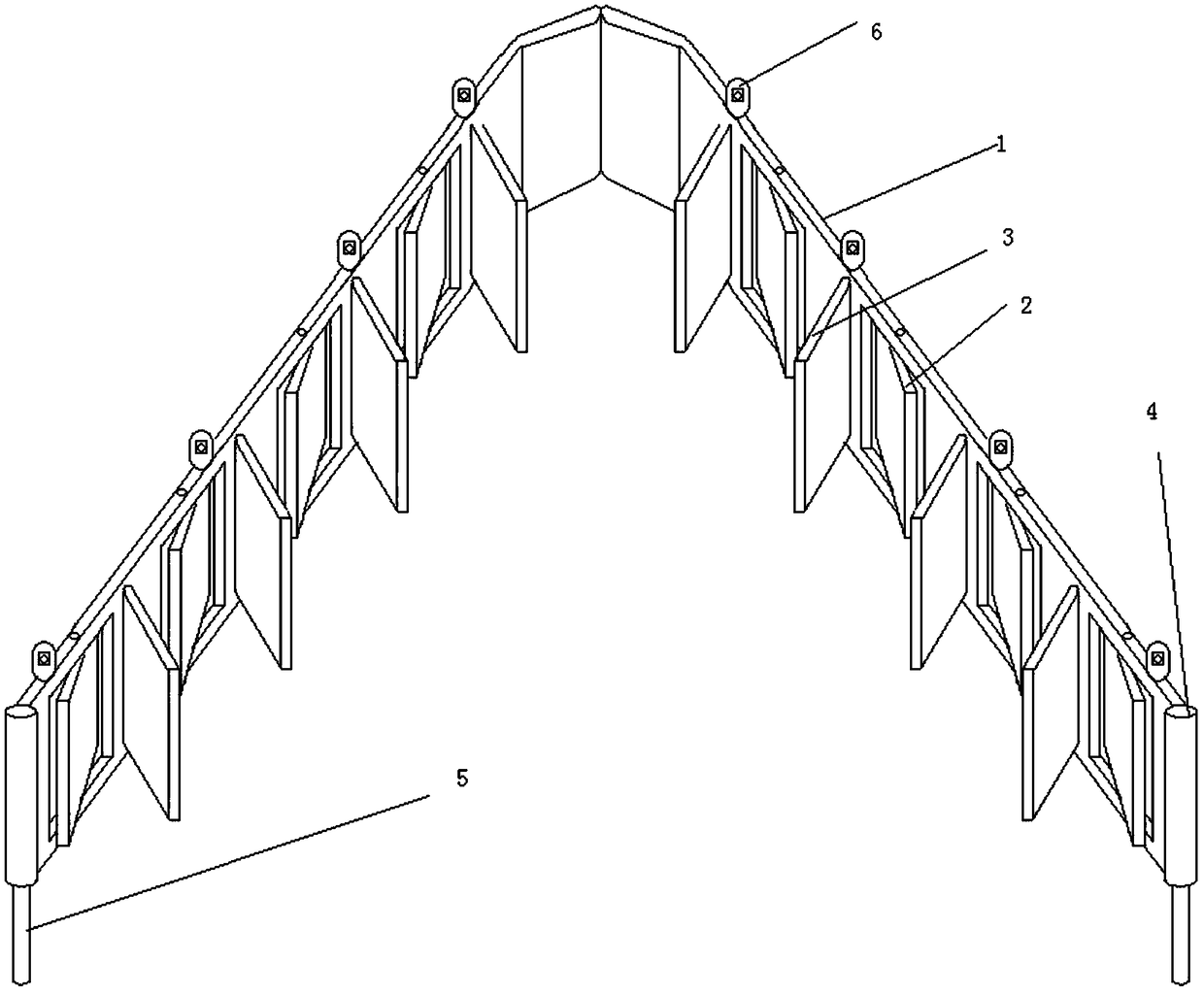Trash rack capable of automatically cleaning floating objects in flowing river channel
A technology of floating objects and trash racks, which is applied in the field of water pollution cleaning, can solve problems such as the impact on the lives of residents on both sides of the strait, high labor costs, and environmental damage in water source cities, so as to reduce labor costs and large-scale mechanical energy consumption, and reduce material and financial resources , The effect of facilitating the passage of ships
- Summary
- Abstract
- Description
- Claims
- Application Information
AI Technical Summary
Problems solved by technology
Method used
Image
Examples
Embodiment 1
[0019] A trash rack for self-cleaning floating objects in flowing rivers, comprising two dirt-blocking frames connected in a "herringbone" shape, and at least one of the dirt-blocking frames is provided with an infrared detector, and the inside of the dirt-blocking frame is vertically A rotatable grid plate group is provided in the direction, and a rotatable deflector group is provided on the dirt retaining frame facing the "herringbone" shaped area. The deflectors in the deflector group rotate outwards, so that The edges of the two dirt baffles are all provided with hollow tubes fixed on the embankment by steel wires, and telescopic rods are inserted in the hollow tubes, which can meet the needs of rivers of different depths and improve the stability of the entire device. The infrared detection The sensor transmits the detected information to the central processor, and then sends a signal through the central processor to control the opening and closing of the two dirt retainin...
Embodiment 2
[0027] When the river channel is narrow, the contact between the two dirt-retaining frames can be set in a circular arc shape, which can relieve the impact of the rapid water flow on the dirt-retaining frame and prolong the service life of the pollution-retaining grid.
PUM
 Login to View More
Login to View More Abstract
Description
Claims
Application Information
 Login to View More
Login to View More - R&D
- Intellectual Property
- Life Sciences
- Materials
- Tech Scout
- Unparalleled Data Quality
- Higher Quality Content
- 60% Fewer Hallucinations
Browse by: Latest US Patents, China's latest patents, Technical Efficacy Thesaurus, Application Domain, Technology Topic, Popular Technical Reports.
© 2025 PatSnap. All rights reserved.Legal|Privacy policy|Modern Slavery Act Transparency Statement|Sitemap|About US| Contact US: help@patsnap.com

